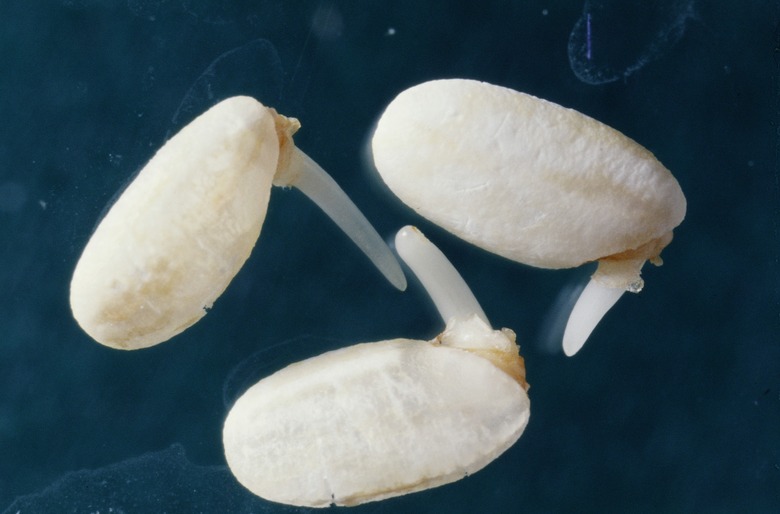Germination Of Bean Seeds Without Soil
Growing annual beans (Phaseolus spp.) in your home garden and serving these low-fat, high-fiber, protein-rich legumes can be a money-saving and rewarding experience. Sprouting beans can also help you spend some quality time with your child. Teaching him how to sprout beans is educational, and because you don't need soil to do this, there's no mess for you to clean up afterward.
About Bean Seeds
Step 1
Some general knowledge about beans might make the germination process easier to understand. Beans are seeds that contain cells that grow into plants. All the nutrients required for this process are present in the seed. When you look at the bean, you're really looking at the seed coating — a layer that offers protection from damage, parasites and unfavorable temperatures. Within the seed lies the embryo, which grows into the plant, and the endosperm, which feeds the embryo as it develops.
- Growing annual beans (Phaseolus spp.)
- When you look at the bean, you're really looking at the seed coating — a layer that offers protection from damage, parasites and unfavorable temperatures.
Pre-Sprouting Benefits
Step 1
In addition to being an educational project, germinating beans before planting them is a process that has other benefits. Pre-sprouting the seeds allows you to determine which ones are viable and eliminates the task of thinning seedlings. It saves space in the garden, and by exposing the seeds to ideal conditions, you can give the plants an early start instead of waiting for the soil to warm up to 60 degrees Fahrenheit after the last spring frost has passed.
Soaking
Step 1
Soaking bean seeds in water can help promote germination. To do this, fill a bowl with water that's about 80 degrees Fahrenheit. Put the seeds in the bowl and place the bowl on a heat mat so the water stays warm. Leave the seeds in the bowl overnight so they can absorb the water and swell. Then, drain the seeds and lay them on a paper towel for a short period until they're dry and easier to handle.
- In addition to being an educational project, germinating beans before planting them is a process that has other benefits.
- It saves space in the garden, and by exposing the seeds to ideal conditions, you can give the plants an early start instead of waiting for the soil to warm up to 60 degrees Fahrenheit after the last spring frost has passed.
Germination
Step 1
To sprout your beans, moisten a double layer of paper towels with water and squeeze out excess liquid. Place the seeds on the paper, leaving about 1 inch between each seed. Then, roll or fold the paper up, making sure the moist towel is in contact with the seeds. Put the paper towel in a partially zipped, plastic sandwich bag and place this on top of the fridge. The top of the refrigerator is generally warm, which helps speed germination. Wait two days, and then, check the seeds daily for germination.
References
- United States Department of Agriculture: Classification for Kingdom Plantae Down to Genus Phaseolus L.
- United States Department of Agriculture: Nutritional Value of Dry Beans
- Canadian Gardening: Three Seed-Sowing Techniques
- University of New Hampshire Cooperative Extension: Growing Beans
- The Complete Idiot's Guide to Year-Round Gardening; Delilah Smittle and Sheri Richerson
- Rodale's All-New Encyclopedia of Organic Gardening; Fern Marshall Bradley and Barbara W. Ellis
